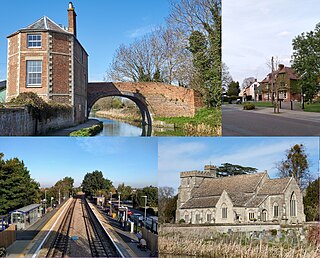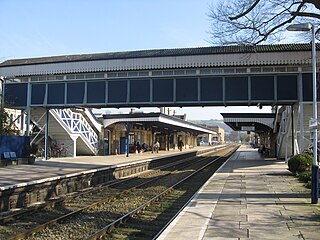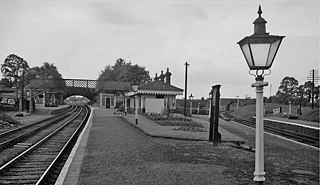Proposals and construction

The Stroudwater Navigation was opened in 1779, bringing cheap transportation to Stroud for imports, especially coal and agricultural requirements, and exports of the manufactures of the district. The Thames and Severn Canal followed in 1789, offering a direct connection to London.
The Bristol and Gloucester Railway opened its main line in 1844, passing to the west of Nailsworth and Stroud, and the Great Western Railway opened its line through Stroud in 1845, bringing further benefits. However it was observed that Nailsworth, being somewhat further from the line, suffered a disadvantage compared with its rival town of Stroud.
| Stonehouse and Nailsworth Railway Act 1863 | |
|---|---|
| Act of Parliament | |
 | |
| Long title | An Act for making a Railway from the Bristol and Birmingham Line of the Midland Railway at Stonehouse to Nailsworth in the County of Gloucester. |
| Citation | 26 & 27 Vict. c. cxxxii |
| Dates | |
| Royal assent | 13 July 1863 |
| Text of statute as originally enacted | |
| Stonehouse and Nailsworth Railway Act 1865 | |
|---|---|
| Act of Parliament | |
 | |
| Long title | An Act to authorize the Stonehouse and Nailsworth Railway Company to extend their Railway from Dudbridge to the Great Western Railway at Stroud; and for other Purposes relating to the same Company. |
| Citation | 28 & 29 Vict. c. clxxvii |
| Dates | |
| Royal assent | 29 June 1865 |
| Text of statute as originally enacted | |
In 1862 it was proposed to build a branch railway from Stonehouse on the former Bristol and Gloucester Railway line to Nailsworth. The B&GR had now passed into the possession of the Midland Railway. Sufficient support seemed to be forthcoming, and a parliamentary bill went to the 1863 session of Parliament. With little opposition, the bill was passed as the Stonehouse and Nailsworth Railway Act 1863 (26 & 27 Vict. c. cxxxii) on 13 July 1863. Authorised capital was £66,000. [1] [2] [3]
A contract was let for the construction to Watson, Overend & Company, and the first sod was cut on 22 February 1864. The Stroud Journal, in reporting the first sod ceremony, asserted that "it is well understood to be the first step of an extension on through Tetbury, Malmesbury and Chippenham". [4] The support for the line locally was indicated by the fact that the capital for the construction was soon raised, although a heavy commitment in debentures was taken.
Following an easy river valley course, the line was quickly completed, and the necessary Board of Trade inspection took place, in order to obtain permission for passenger operation. Colonel Yolland made the necessary visit in December 1866 but he declined to recommend opening to passengers, chiefly on the ground of there being only one turntable on the line. At the time the Board of Trade policy was to prohibit the running of tender engines tender-first, so requiring a turntable at each end of a line. There seems to have been some failure of communication, for an anguished remark was made that tank engine operation was intended, which seems to have resulted in belated approval.












